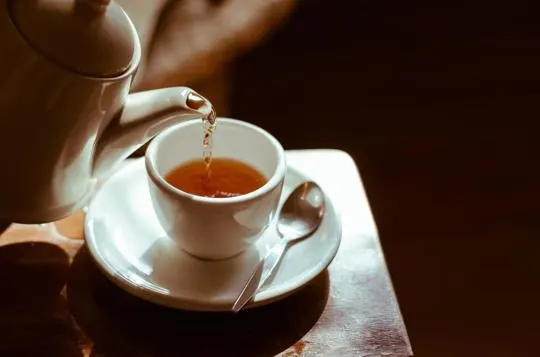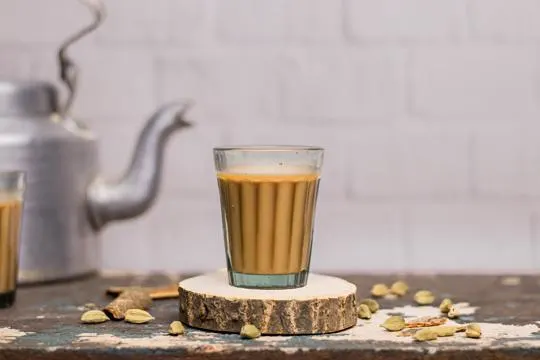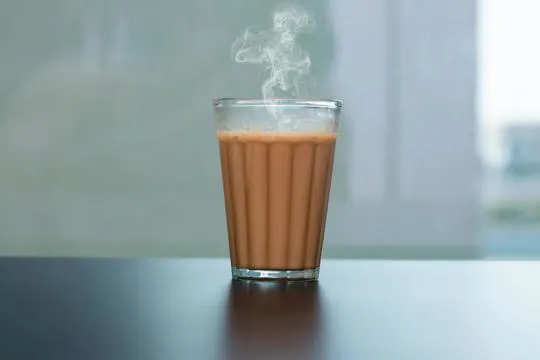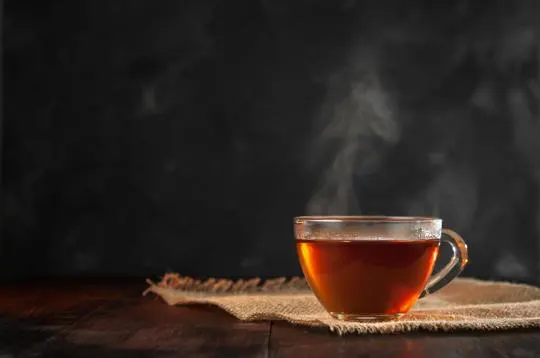Summary of key points
The difference between tea and chai is largely cultural and ingredient-based. “Tea” refers to the beverage made by steeping cured or fresh leaves of the Camellia sinensis plant in hot water. “Chai,” meaning tea in Hindi, typically refers to a spiced milk tea blend that includes ingredients such as cardamom, cinnamon, ginger, clove, and black tea leaves.
Ever found yourself in a café, menu in hand, puzzled over choosing tea or chai? Yep, we’ve been there too.
What really separates these two? It’s not as straightforward as one might think.
First off, confession time: I’ve used the terms interchangeably for ages. Embarrassing, I know. It took a surprisingly awkward moment at a friend’s place to set me straight. She asked for tea; I served chai. The puzzled look on her face said it all.
Turns out, there’s a world of difference.
And it’s not just about the labels. It dives deep into the heart of flavors, traditions, and cultures.
Stay tuned. We’re about to unravel this tasty mystery together.
What is Tea?

Tea is a beloved beverage, enjoyed by people globally.
It originates from the Camellia sinensis plant.
Cultures have been sipping this fragrant, flavorful drink for centuries.
There are various kinds of tea, for example, black, green, white, oolong, and herbal tea.
Creating tea involves picking young tea leaves.
Then the leaves go through a specific process of oxidation and fermentation.
Afterward, the leaves are dried and can be brewed into a delicious cup of tea.
The flavor and aroma of tea alters depending on the tea leaves used, where they were grown, and the brewing techniques.
Not only does tea make for a great drinking experience, but it also has potential health benefits.
It is rich in antioxidants, which may protect against illnesses like heart disease and some cancers.
In addition, tea has a calming effect due to the presence of L-theanine, an amino acid.
It is essential to recognize that true tea comes from the Camellia sinensis plant.
In contrast, beverages like chai are made with a mix of spices (like cardamom, cinnamon, ginger, cloves) plus milk or dairy alternatives.
What is Chai?

Chai, aka masala chai, is an aromatic and flavorful beverage. It originated in India.
To make it, black tea leaves are brewed with spices like cardamom, ginger, cinnamon and cloves.
Milk makes it creamy and indulgent. Chai has been enjoyed for centuries in India.
Plus, it’s popular worldwide for its unique taste and health benefits.
The spices in chai add flavor and bring health benefits.
E.g.: ginger helps digestion and cardamom helps detox.
To make chai, boil water, tea leaves, spices and milk. Then strain it and serve hot.
You can add honey or sweeteners for a sweeter taste.
Chai has a robust flavor profile due to its spices.
This makes it great for those who like bold flavors, or looking to try something new.
Differences Between Tea and Chai

Tea and chai may look alike, but they are different.
Tea is a broad group of drinks made from the Camellia sinensis plant.
Chai is a special type of spiced milk tea that is popular in India and around.
How they are made is one difference.
Traditional teas are brewed by steeping tea leaves.
Chai is boiled with black tea, milk, spices, and sweeteners.
This produces a creamy, flavorful drink.
Tea and chai also have different cultural meanings.
Tea is important to many countries, such as China, Japan, and England.
It is often served at formal events.
Chai is an Indian social bonding ritual, enjoyed all day.
Chai has unique health benefits too.
The spices can be antioxidant and help digestion.
Milk adds calcium and protein.
Whether you like tea or chai depends on your tastes and background.
So go ahead and enjoy whichever one you like.
Ingredients Used
When it comes to tea and chai, one must ponder their defining factor – their ingredients.
Both drinks provide a delightful experience.
Tea is dubbed ‘the elixir of life’ and is made from Camellia sinensis leaves.
These leaves are withered, rolled, oxidised and dried to create black, green, white or oolong tea.
Chai differs, being a combination of spices and tea brewed in milk or water.
The core ingredients are black tea leaves, cardamom pods, cinnamon sticks, ginger root, cloves and black peppercorns.
These are blended to create a flavourful beverage.
Tea and chai have common features, like tea leaves and warmth.
However, their ingredients make them unique.
Tea has a natural flavour from the type of leaves used, whereas chai offers a fusion of spicy notes from its spices and earthy undertones from its black tea base.
Flavor and Taste
Flavor and taste are key differences between tea and chai.
Tea is known for its light flavor and refreshing taste.
While chai has a bold, robust flavor from the mix of spices such as cardamom, cinnamon, ginger, and cloves.
Plus, chai usually has a creamy texture from the milk or other dairy.
These tiny variations make both tea and chai enjoyable in their own ways.
Preparation Methods
Tea & Chai have unique characteristics.
To prepare them, infuse tea leaves or bags in hot water.
Then, add milk & sugar to taste.
The ingredients ratio may vary, according to the type of tea/chai.
Some use a teapot or kettle, others opt for individual cups or mugs.
Ultimately, it is a matter of personal taste and cultural traditions.
Cultural Background
Tea and chai offer insights into their origins and significance.
Tea, from China, is celebrated in East Asian cultures.
Chai, however, has deep roots in India and South Asia.
Tea has a long history in China. It has been revered for thousands of years.
With its flavor profiles and therapeutic properties, tea ceremonies are an essential part of Chinese social gatherings.
Each variety of tea has its own special meaning, making it a symbol of Chinese heritage.
Chai holds a cultural importance in India and South Asia.
It’s made with black tea leaves, milk, spices like cardamom, ginger, and cinnamon, plus sweeteners like sugar or honey.
It’s not just a beverage, but a sign of hospitality and community.
It’s often given to guests as a welcoming gesture.
Tea and chai share commonalities, but their cultural backgrounds emphasize their differences.
Tea ceremonies embody the elegance and peace of East Asian culture.
Meanwhile, chai focuses on communal bonding, emphasizing connection in Indian society.
Similarities Between Tea and Chai

Tea and chai have much in common.
People all over the world enjoy them both.
They both have energizing effects and bring warmth.
Tea is usually referred to as green or black, while chai is often made with black tea, plus spices like cardamom, cinnamon and ginger.
Both are flavorful and can be great for your health, as they contain antioxidants.
So, why not appreciate the different options when it comes to hot drinks? Enjoy.
Popular Varieties of Tea and Chai
When it comes to tea & chai, there are many popular varieties.
Though both are similar, they have distinct traits that set them apart.
Let’s look at the types of tea & chai & their unique flavors & preparation methods.
Types of Tea:
- Black Tea: Bold & robust flavor. Often enjoyed with milk or sugar.
- Green Tea: Light & fresh taste. Minimal oxidation.
- Oolong Tea: Balanced flavor profile. Varying levels of oxidation.
- White Tea: Most delicate type. Made from young leaves & buds. Subtle & nuanced taste.
Types of Chai:
- Masala Chai: Spiced milk tea with cardamom, cinnamon, ginger, cloves, & black pepper.
- Ginger Chai: Intense ginger flavor for warmth.
- Mint Chai: Traditional chai with a refreshing twist.
- Masaledar Chai: Masala chai with chili powder or cayenne pepper.
Additional Details:
- Teas can be enjoyed hot or cold. Chai is usually served hot.
- Tea leaves are steeped in hot water. Chai is simmered with milk & spices.
How to Brew Tea and Chai
Brewing tea and chai? Different techniques.
For tea:
- Boil the water – get it to the right temp.
- Put tea leaves or bags in a teapot.
- Pour hot water over the tea and let steep.
- Strain it into a cup and enjoy.
Chai time:
- Heat up water and milk in a pan.
- Add cardamom, cinnamon, cloves, ginger.
- Bring the mix to a simmer and add tea leaves or chai powder.
- Let boil, strain, and enjoy.
Want a stronger flavor? Adjust the ingredients or steeping time.
Experiment and find your perfect cup.
Conclusion
In the end, the similarities and differences between tea and chai are up to personal preference.
Both beverages are enjoyed around the world for their great taste.
Tea can be enjoyed with or without milk whereas specialty chai is generally made with warm milk.
When it comes to nutrition, both offer varying levels of antioxidants from region to region and type of blend chosen.
Tea is generally lower in caffeine while chai concentrates tend to have higher levels.
But no matter what beverage you choose, one thing remains certain – these drinks have been around for centuries and will continue to remain popular through time due to its unique flavor profiles that often vary depending on the region from which it is brewed.
Whether you prefer your chai latte with a hint of cardamom or just like a plain cup of green tea, rest assured that both beverages provide great health benefits and make for an enjoyable place for conversation.

Leave a comment